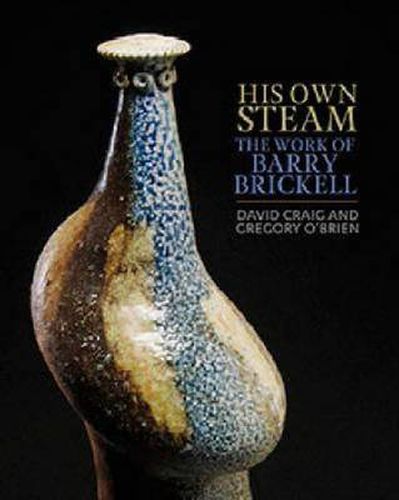Readings Newsletter
Become a Readings Member to make your shopping experience even easier.
Sign in or sign up for free!
You’re not far away from qualifying for FREE standard shipping within Australia
You’ve qualified for FREE standard shipping within Australia
The cart is loading…






The work of potter, artist, craftsperson, railway enthusiast and iconoclast Barry Brickell. In essays by David Craig and Gregory O'Brien and with both newly commissioned photographs by Haru Sameshima and historic images, His Own Steam: The Work of Barry Brickell charts Brickell’s career in its entirety and in the context of his life and times, timed to coincide with a survey exhibition of the same name at The Dowse Art Museum. To begin, an essay by David Craig sketches out Brickell’s history and career, then takes us through crucial themes, preoccupations and forms in his work, from sustaining domesticware to the influences of the medieval grotesque and Pacific and Sepik motifs; from realistic murals to bodily ‘morphs’. Here Brickell’s personal preoccupations with energy and engineering, the body and conservation, are made clear. His most well-known forms, for example, the ‘spiromorphs’, are large-scale spiral creations built from coiled clay, which twist and unfold in curves that parallel the spirals of his railway.
$9.00 standard shipping within Australia
FREE standard shipping within Australia for orders over $100.00
Express & International shipping calculated at checkout
The work of potter, artist, craftsperson, railway enthusiast and iconoclast Barry Brickell. In essays by David Craig and Gregory O'Brien and with both newly commissioned photographs by Haru Sameshima and historic images, His Own Steam: The Work of Barry Brickell charts Brickell’s career in its entirety and in the context of his life and times, timed to coincide with a survey exhibition of the same name at The Dowse Art Museum. To begin, an essay by David Craig sketches out Brickell’s history and career, then takes us through crucial themes, preoccupations and forms in his work, from sustaining domesticware to the influences of the medieval grotesque and Pacific and Sepik motifs; from realistic murals to bodily ‘morphs’. Here Brickell’s personal preoccupations with energy and engineering, the body and conservation, are made clear. His most well-known forms, for example, the ‘spiromorphs’, are large-scale spiral creations built from coiled clay, which twist and unfold in curves that parallel the spirals of his railway.